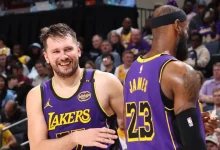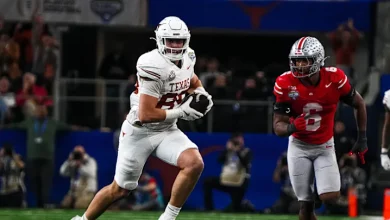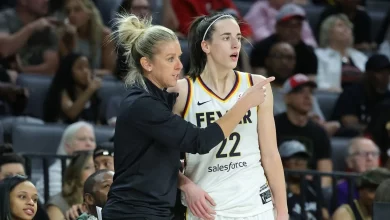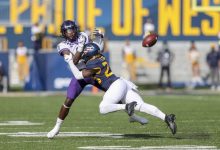The general manager of the Baltimore Ravens delivers an insightful lesson from his mentor, stressing the value of strategic decision-making and long-term vision in team development.
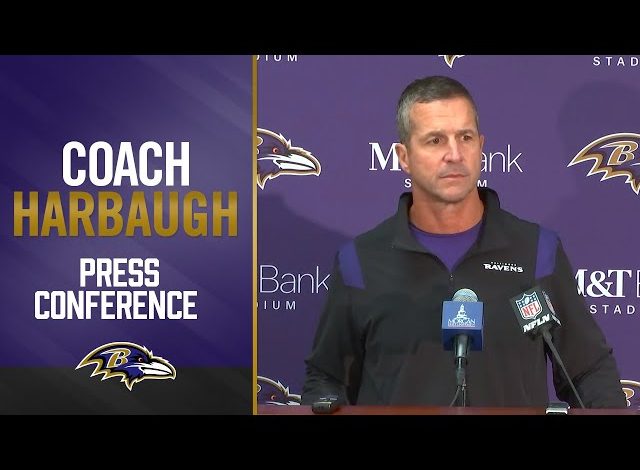
In the world of professional sports, particularly the NFL, team building and roster management are as much about strategy and foresight as they are about immediate success. Behind every successful franchise, there is a management philosophy rooted in a deep understanding of what it takes to build a championship-caliber team. For the Baltimore Ravens, much of the credit for their consistency and sustained success can be attributed to their general manager, Eric DeCosta. In a recent interview, DeCosta revealed an impactful lesson he learned from his mentor that has guided his approach to managing the Ravens.
This lesson emphasizes two core principles: strategic decision-making and long-term vision. These pillars of management have not only shaped the Ravens’ past successes but are also critical to the team’s future as they navigate an ever-evolving NFL landscape. For DeCosta, this mindset is more than just a managerial philosophy—it’s a way of life within the organization. And as the Ravens continue to build their roster, it’s a lesson that will have a lasting impact on the future of the franchise.
The Mentor: Ozzie Newsome and the Ravens’ Legacy
Before diving into the lesson itself, it’s important to understand the relationship between Eric DeCosta and his mentor, Ozzie Newsome. Newsome, the longtime general manager of the Ravens and a Hall of Fame tight end, is often considered one of the most respected figures in NFL front-office circles. His contributions to the Ravens’ success cannot be overstated, as he was responsible for drafting key players, making pivotal trades, and creating a championship-contending roster year after year.
Newsome’s impact on DeCosta goes beyond just football operations. Newsome was instrumental in shaping DeCosta’s management philosophy, focusing on the importance of building a strong organizational foundation that is focused on sustainable success. Under Newsome’s guidance, DeCosta learned the intricacies of the salary cap, roster construction, and the art of making both short-term and long-term decisions.
When DeCosta was promoted to general manager in 2019 after Newsome’s retirement, he inherited a well-established culture and a roster built to compete for championships. However, even with a great team in place, DeCosta knew he would need to take the lessons learned from his mentor and adapt them to the changing NFL landscape. The lesson DeCosta shared recently speaks to the core values that he and Newsome both prioritize: the need for strategic decision-making and long-term vision in building a successful team.
Strategic Decision-Making: Balancing Immediate and Future Needs
One of the most valuable lessons DeCosta learned from Newsome is the importance of strategic decision-making—making moves that not only help in the present but also set the foundation for future success. In the NFL, where salary caps and player contracts dictate how teams can build their rosters, this balancing act is crucial.
Newsome’s approach to decision-making was always about weighing the long-term consequences of a move while keeping an eye on immediate needs. This was particularly evident in the way he handled high-profile draft picks and trades. He understood that building a team is not simply about acquiring talent, but about acquiring the right talent at the right time for the right price. He was known for making bold moves when needed, but also for showing patience and restraint when the situation called for it.
For DeCosta, this mindset has been vital as the Ravens have navigated a series of important decisions over the years. One of the most significant of these decisions was in the 2022 NFL Draft, where the Ravens traded back in the first round to accumulate more assets for future drafts. Instead of making an immediate splash with a high-profile pick, DeCosta chose to build depth and fortify the future. This move demonstrated his belief in making decisions that benefit the long-term health of the team, rather than simply reacting to short-term needs.
However, it’s not always easy to balance the present with the future. In today’s NFL, where franchises are often judged based on their ability to win now, making decisions with a long-term vision can be risky. But DeCosta has shown time and again that his approach, which mirrors Newsome’s, can lead to consistent success. By maintaining flexibility, making smart trades, and drafting well, the Ravens have stayed competitive year after year.
The Importance of Drafting for the Future
Another key aspect of strategic decision-making is the drafting philosophy that DeCosta inherited from Newsome. The Ravens have built a reputation as one of the best drafting teams in the NFL, largely due to Newsome’s commitment to finding and developing talent over the long haul. For DeCosta, drafting players who can contribute not just immediately but over several seasons is a cornerstone of his team-building strategy.
Over the years, the Ravens have made significant strides in drafting players who fit the team’s needs and their system. From finding a Franchise quarterback in Lamar Jackson to securing elite defensive players like Marlon Humphrey and Patrick Queen, the Ravens’ front office has consistently picked players who fit their culture and philosophy. But perhaps the most impressive element of DeCosta’s drafting strategy is the team’s ability to find talent beyond the first round, often unearthing diamonds in the rough.
This approach reflects DeCosta’s understanding that the draft is not just about picking the best available talent but about fitting those players into a cohesive system that maximizes their strengths. For example, the Ravens have long been known for their dominant defense, and many of their draft picks have been geared toward strengthening that side of the ball. From interior linemen to cornerbacks, the Ravens consistently identify and acquire the pieces needed to keep their defense among the league’s best. However, they’ve also made great strides in improving their offensive weapons, most notably through the development of Lamar Jackson and surrounding him with the right supporting cast.
The Salary Cap: Navigating Financial Flexibility
In addition to making smart decisions in the draft and trade market, DeCosta and the Ravens have been able to maintain financial flexibility—a vital component of building a sustainable roster. Managing the salary cap is often one of the most challenging aspects of team building in the NFL, and Newsome’s guidance on how to handle cap space has proved invaluable.
Under DeCosta, the Ravens have been adept at managing their salary cap in a way that allows them to make key signings when necessary while also maintaining the ability to stay flexible for future seasons. The Ravens have found success by making strategic, cost-effective moves in free agency and re-signing key players at the right price. This financial acumen has allowed them to build a deep, talented roster without being tied down to long-term, unsustainable contracts.
It’s clear that long-term financial flexibility is one of the major lessons DeCosta learned from Newsome, and it has been a cornerstone of the Ravens’ ability to remain competitive despite some of the league’s most challenging financial restrictions.
The Long-Term Vision: Building for Sustainable Success
While strategic decision-making and managing financial flexibility are important, the overarching principle that guides the Ravens’ operations is long-term vision. Newsome always prioritized sustainable success over short-term gains, and that mentality has been passed down to DeCosta. Rather than focusing on one or two seasons, the Ravens’ general manager is looking toward building a franchise that will remain competitive for years to come.
For DeCosta, this long-term vision is not just about making decisions that will lead to immediate success but about maintaining a consistent level of competitiveness for the next decade or longer. That means recognizing the ebbs and flows of the NFL, staying adaptable, and making decisions that benefit the franchise over the long haul.
The Ravens are not only focused on winning now; they are also thinking ahead to what the team will look like in the next few seasons. While they have a star quarterback in Lamar Jackson and a promising core of players, DeCosta’s long-term vision ensures that the team will be able to continue competing for championships for years to come, regardless of the challenges they may face.

